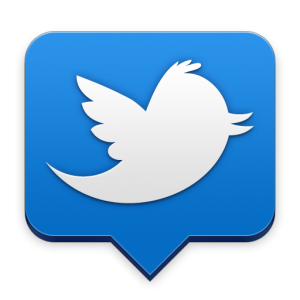
Why Your Teachers Should Use Twitter: Power PD-one tweet at a time
By Kim Greene
There comes a point when we have to acknowledge that one-size-fits-all professional development isn’t cutting it. Just as students need to be treated as individual learners, so do the teachers in your schools. And while your district may offer workshops and webinars, there’s another PD resource right at your teachers’ fingertips. It’s open 24-7, connects educators from around the globe, and covers countless topics across grade levels and subject areas.
It’s Twitter.
We know what you might be thinking. There aren’t enough hours in the day to check another social media site. Well, we have good news for you. You and your teachers can spend as much or as little time as you want exploring ideas—wherever and whenever you want. Twitter is a giant professional learning network (PLN) that helps educators step outside of their classrooms and schools. Together they problem-solve, share, and refine their craft.
We’ve assembled a guide for you to share with your teachers so they can make the most of Twitter as a PD tool.
To get the scoop on Twitter as PD, we spoke with two tweeting teachers, Lyssa Sahadevan (@lyssareads), a first-grade teacher at East Side Elementary in Marietta, Georgia, and Allison Hogan (@AllisonHoganEDU), a transitional kindergarten/first-grade teacher at the Episcopal School of Dallas.
For teachers who have never been on Twitter before and have just created an account, where should they start?
Allison: My first piece of advice is to take the time to create your profile. When someone follows me, I look at their profile to see if they’re a teacher, principal, etc. Also, follow people in your school community to see how they use it.
Lyssa: A friend of mine took an online Twitter how-to. She was so overwhelmed! I suggested she just go for it, and that route worked for her.
When it’s time to start tweeting, what’s your best advice?
Allison: Start with a chat in your comfort zone, like your grade level or content area. Move to larger groups once you get the format down.
Lyssa: I started simple with #1stchat (first-grade chat) and just sat on the sidelines!
How do you start to form a PLN out of a sea of strangers?
Lyssa: It all starts with hitting reply. If something speaks to you (and you might not always be in agreement), you reply. A conversation ensues. You retweet them, they retweet you, you ask questions and share resources. You might meet them in person one day at a conference. It’s awkward, but it’s also exciting! You already know you have something in common.
How do you maximize your Twitter time without it taking over life?
Allison: I investigate topics and lean toward what I will need and what I have to offer. Think strengths and weaknesses.
Lyssa: I often miss my favorite chats because the times do not work, so I devote a little Saturday-morning coffee time to going through the archives. I pick and choose. If I’m working on an improving math workshop, I make time to attend the chat. If there is a conference going on, I try to check in on Twitter or make a note of the hashtag so I can follow.
In terms of social media, do you think Twitter has something unique to offer teachers that Facebook and other platforms don’t?
Allison: Twitter is way better than Facebook just because of the access—meaning a hashtag can unite hundreds of educators at one time and for a purpose. I can also ask a question using the same hashtag, and it will reach those who follow the hashtag, so more ideas will flow.
Lyssa: The openness of Twitter is unbelievable. The year I co-taught, I posted a tweet asking for tips. At least 10 or 15 teachers reached out to me with advice, special education resources, and blog posts. It was so encouraging! These teachers were strangers who just wanted to help. I had expert advice immediately.
Allison: Once teachers see the effects of Twitter, it will be easy to transition to a class account to share their work and wonderings with the world. I feel Twitter and Skype have torn down the walls of my classroom.
Read more about #hashtags and chats: http://blogs.scholastic.com/education_pulse/2014/10/why-your-teachers-should-use-twitter.html#.VFlHkIfGIST